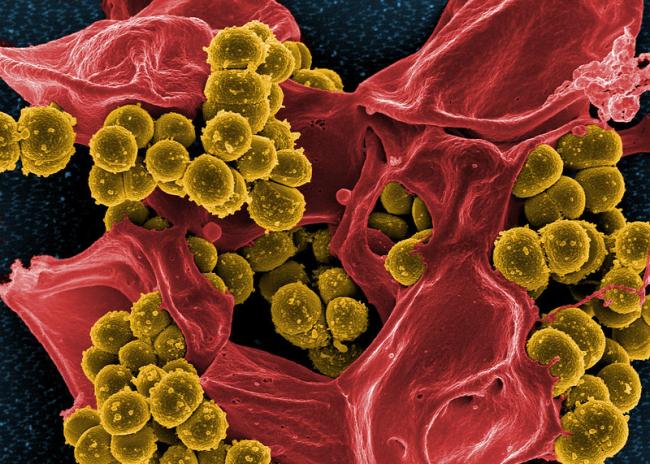Two Shots, Seven Days Apart: New Staph Treatment Could Replace Weeks of Daily IVs

Treating a dangerous staph infection in your blood usually means weeks tethered to a daily IV drip. But new research suggests a far simpler plan — just two antibiotic doses, one week apart — works just as well.
The clinical trial, published Aug. 13 in JAMA, tested the antibiotic dalbavancin against the standard daily IV antibiotic routine for complicated Staphylococcus aureus bloodstream infections — the kind that can be deadly and often involve drug-resistant strains like MRSA.
The results? Dalbavancin held its own.
“This gives us a vital new alternative to treat these severe infections,” said Dr. John Beigel of the National Institute of Allergy and Infectious Diseases, which sponsored the study.
In the trial, 200 patients across the US and Canada were randomly assigned to either:
- Dalbavancin: 1,500 mg IV on day one and day eight
- Standard care: Daily IV antibiotics for 4–8 weeks
Both groups had about the same success rate in clearing the infection. But there was a big quality-of-life difference: standard care required a long-term catheter (PICC line) that stays in for weeks — raising the risk of blood clots and additional infections. Dalbavancin patients only needed a short catheter for about an hour during each of the two doses.
Not surprisingly, complications like blood clots were more common in the daily-IV group. And while serious side effects were similar overall (40 for dalbavancin vs. 34 for standard care), fewer dalbavancin patients had to quit treatment early (3% vs. 12%).
Staph bloodstream infections are not rare — in 2017 alone, they struck nearly 120,000 Americans and killed about 20,000. Treatment options are limited, and resistance is growing. Dalbavancin, approved by the FDA in 2014, could give doctors a way to treat patients without tying them to hospital visits or long-term IV lines.
Researchers now plan to crunch the numbers on cost-effectiveness, which could decide how quickly hospitals adopt this two-dose approach.
“Our findings give patients and healthcare providers another real option,” said Dr. Nicholas Turner, Duke University infectious disease specialist and the study’s lead author.
If it passes the cost test, a drug that knocks out a deadly infection in just two clinic visits could be a game-changer — especially for patients who want to get back to their lives without weeks of tubes and hospital trips.
With input from US News & World Report and National Institutes of Health.









The latest news in your social feeds
Subscribe to our social media platforms to stay tuned